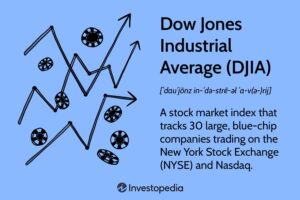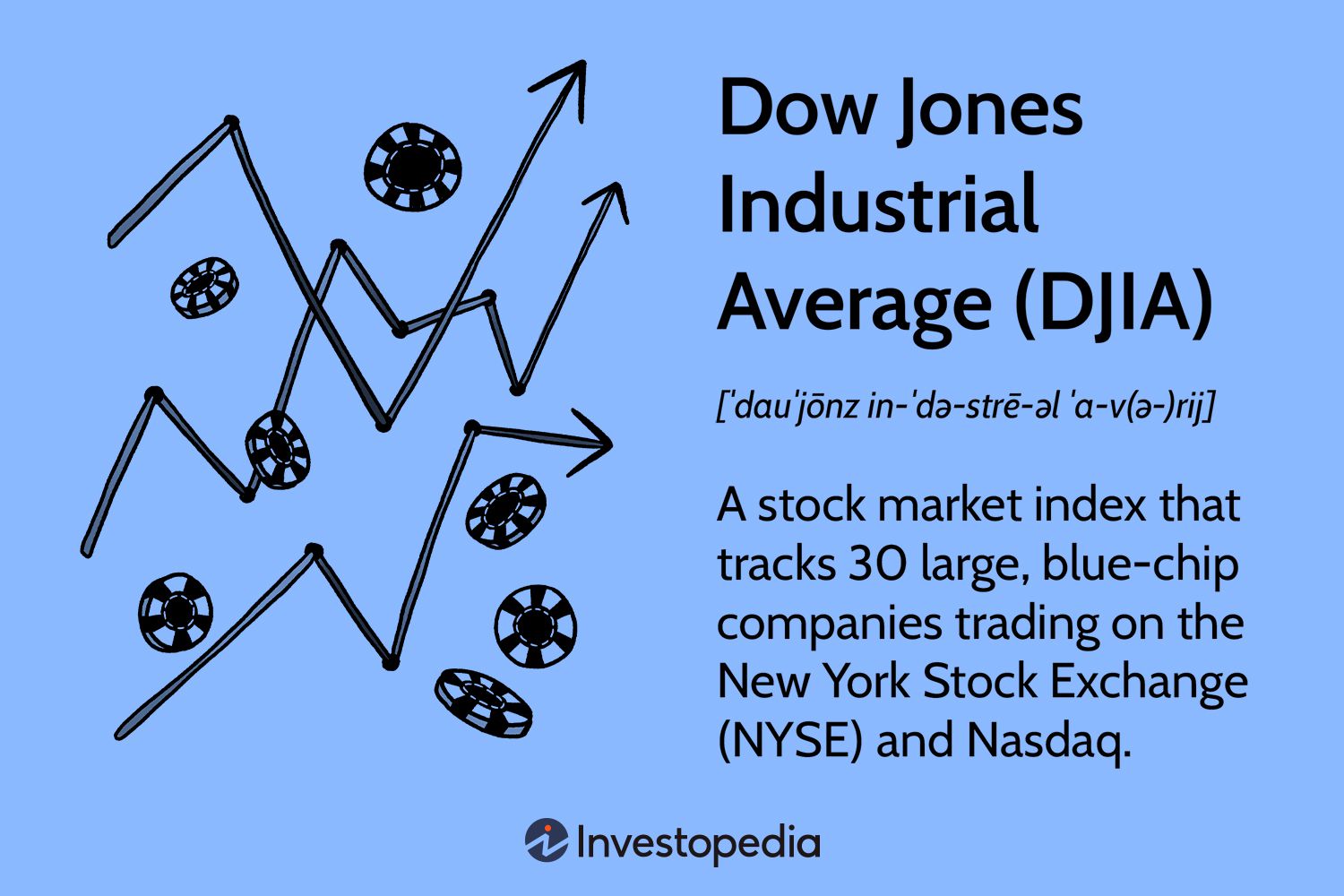You hear about it every day. News reports constantly mention its ups and downs. The Dow Jones stock markets seem to be a central part of financial news. But what exactly does this term mean? For many, it remains a somewhat confusing concept. However, understanding the Dow Jones is key to grasping broader economic trends.

This guide will clearly explain the Dow Jones stock markets. We will look at what they are. We will discuss their most famous component. And, we will see why they matter so much to investors and the economy. So, let’s begin this journey of discovery.
What Are the Dow Jones Stock Markets, Really?
First, let’s clarify an important point. When people refer to “Dow Jones stock markets,” they are usually talking about a series of stock market indices published by S&P Dow Jones Indices. It is not a single, physical stock market where you can buy or sell shares. Instead, these indices are like barometers. They measure the performance of a specific group of stocks. This helps investors understand the overall direction of the market or a particular sector.
The name “Dow Jones” comes from Dow Jones & Company. This was the original publisher, founded by Charles Dow, Edward Jones, and Charles Bergstresser in 1882. While the company is now part of News Corp, its legacy continues through these influential indices. Therefore, understanding Dow Jones stock markets means understanding these specific financial tools.
The Star Player: The Dow Jones Industrial Average (DJIA)
The most famous of all Dow Jones indices is the Dow Jones Industrial Average, often called the DJIA or simply “the Dow.” This index is what most news reports refer to when they say “the Dow was up” or “the Dow was down.” So, it’s very important.
- A Rich History: Charles Dow created the DJIA on May 26, 1896. Initially, it included just 12 industrial companies. The idea was to provide a simple way to track the health of America’s industrial sector. This was a new concept at the time.
- Its Core Purpose: Over time, the DJIA has evolved. It now aims to represent the overall health of the U.S. economy, not just industrial companies. However, its roots are in industry.
- The Chosen Few: 30 Stocks: Today, the DJIA tracks the performance of 30 large, well-established U.S. companies. These are often called “blue-chip” stocks. They are typically leaders in their respective industries. Examples might include major technology companies, financial institutions, consumer goods producers, and healthcare giants.
- Selection Process: A committee at S&P Dow Jones Indices chooses these 30 companies. They look for firms with an excellent reputation. They also want sustained growth. And, the companies must be of interest to a large number of investors. The components do change over time to reflect the evolving economy.
- Price-Weighted Nature: Crucially, the DJIA is a price-weighted index. This means that stocks with higher share prices have a greater influence on the index’s movement, regardless of the company’s actual overall size (market capitalization). This is different from market-cap-weighted indices like the S&P 500. This distinction is very significant.
Understanding the DJIA is central to understanding discussions about Dow Jones stock markets. It is a widely watched benchmark.
How is the DJIA Calculated? A Simple Look
The calculation of the DJIA might seem complex. However, the basic idea is straightforward. It is not just a simple average of the prices of its 30 stocks. Instead, it uses a special divisor.
This “Dow Divisor” is a number that helps maintain the historical continuity of the index. It adjusts for things like stock splits, dividends, and changes in the companies that make up the index. For example, if a company in the Dow has a stock split (where one share becomes two, each worth half the price), the divisor is adjusted. This ensures the overall value of the DJIA doesn’t suddenly jump or fall just because of the split.
So, the DJIA’s value is calculated by taking the sum of the prices of its 30 component stocks and then dividing that sum by the Dow Divisor. The divisor is currently a number much less than one. This means the DJIA’s value is much higher than the simple sum of its stock prices. This scaling helps in tracking percentage changes more clearly. Therefore, point changes in the Dow reflect these adjusted calculations.
Beyond the DJIA: Other Important Dow Jones Indices
While the DJIA is the most famous, S&P Dow Jones Indices publishes many other indices. These provide insights into different parts of the Dow Jones stock markets and the broader economy. Some other notable ones include:
- Dow Jones Transportation Average (DJTA): This is actually the oldest Dow Jones index, created by Charles Dow in 1884. It tracks 20 leading U.S. transportation companies, including airlines, railroads, and trucking firms. Its performance is often seen as an indicator of economic activity because goods need to be transported.
- Dow Jones Utility Average (DJUA): This index follows 15 prominent U.S. utility companies. Utilities are often considered more stable investments. Thus, this index can reflect investor sentiment towards defensive stocks.
- Dow Jones Composite Average: This index combines all 65 stocks from the DJIA, DJTA, and DJUA. It offers a broader view than any single one of these.
- Global and Thematic Indices: S&P Dow Jones Indices also offers a vast array of global indices (like the Dow Jones Global Dow), regional indices, and thematic indices focusing on specific sectors or investment strategies (e.g., sustainability or Islamic finance).
These various indices show that the “Dow Jones” brand covers much more than just the 30 stocks in the DJIA. They provide a rich toolkit for analyzing Dow Jones stock markets.
Why Do Dow Jones Stock Markets Indicators Matter So Much?
The DJIA, and by extension other Dow Jones stock markets indicators, hold significant importance for several reasons. They are more than just numbers.
- Economic Barometer: The DJIA is widely seen as a key indicator of U.S. economic health and investor confidence. A rising Dow often suggests optimism. Conversely, a falling Dow can signal concerns.
- Media Spotlight: Major news outlets around the world report the Dow’s daily movements. This constant coverage gives it immense public visibility. Consequently, it shapes public perception of the economy.
- Investor Psychology: The Dow’s performance can have a psychological impact on investors. Large swings can influence buying or selling decisions, sometimes leading to herd behavior.
- Benchmark for Investments: Many financial products, such as mutual funds and exchange-traded funds (ETFs), are designed to track or benchmark against Dow Jones indices. This makes them directly relevant to many people’s investments.
- Historical Significance: Its long history provides a valuable timeline of economic events and market reactions over more than a century. This makes it a subject of much study.
These factors combine to give Dow Jones stock markets indicators, particularly the DJIA, a powerful influence.
Understanding Movements in the Dow Jones Stock Markets
The values of the DJIA and other Dow Jones stock markets indices move up and down constantly. Several factors cause these fluctuations.
Key drivers include:
- Company Earnings: The reported profits and future outlook of the component companies are major influences. Strong earnings can boost stock prices and the index.
- Economic Data: Broader economic news, such as employment figures, inflation rates (like the Consumer Price Index), interest rate changes by the Federal Reserve, and GDP growth, significantly impacts investor sentiment and thus the Dow.
- Global Events: Major international events, political developments, or economic shifts in other countries can also affect U.S. markets and the Dow.
- Investor Sentiment: Overall market mood, driven by optimism or fear, plays a big role. Sometimes, sentiment can drive markets even without specific news.
- Industry Trends: Shifts within specific industries represented in the Dow can also cause movements.
It is important to distinguish between short-term volatility (daily ups and downs) and long-term trends. Focusing too much on daily changes can be misleading. Instead, looking at performance over months or years gives a better picture. This helps in making informed decisions regarding Dow Jones stock markets.
Valid Criticisms and Limitations of the DJIA
Despite its fame, the DJIA is not without its critics. There are several limitations to be aware of when using it to gauge the market.
- Small Sample Size: The DJIA only includes 30 companies. Critics argue this is too small a number to represent the entire U.S. economy, which has thousands of publicly traded companies.
- Price-Weighting Flaw: As mentioned, its price-weighted methodology gives more influence to stocks with higher prices, not necessarily larger or more economically significant companies. A $1 change in a $200 stock has the same impact as a $1 change in a $20 stock, even if the $20 stock company is much larger. This can distort the picture.
- Not a Broad Market Reflection: Compared to indices like the S&P 500 (which includes 500 companies and is market-cap weighted), the DJIA offers a narrower view of the market. Many experts consider the S&P 500 a better representation of the overall U.S. stock market.
- Historical Industrial Focus: While it has evolved, some say its historical roots still give it a slight bias, though it now includes many non-industrial giants.
These limitations mean that while the DJIA is a useful indicator, it should not be the only tool an investor uses to understand Dow Jones stock markets or the economy as a whole.
How to Follow News on Dow Jones Stock Markets
Staying informed about Dow Jones stock markets is easy today. Many reliable sources provide up-to-date information.
Consider these options:
- Reputable Financial News Websites and Publications: Sources like The Wall Street Journal (originally a Dow Jones publication), Bloomberg, Reuters, The Financial Times, and financial sections of major news outlets offer detailed coverage.
- Online Brokerage Platforms: If you have an investment account, your brokerage likely provides real-time data, charts, and news related to the Dow and other indices.
- S&P Dow Jones Indices Website: The official website of the index administrator (spglobal.com/spdji) offers definitive information on all Dow Jones indices, their methodologies, and performance data.
- Financial Television Networks: Channels like CNBC and Bloomberg Television provide continuous market coverage, including Dow movements.
When following the news, learn to understand basic charts. Pay attention to percentage changes rather than just point changes, as these give a better sense of the movement’s significance.
The Enduring Role of Dow Jones Stock Markets
The term Dow Jones stock markets primarily refers to a family of influential stock market indices, with the Dow Jones Industrial Average (DJIA) being the most prominent. For over a century, the DJIA has served as a key barometer of U.S. economic health and investor sentiment.
While it has limitations, its historical significance, media prominence, and use in financial products ensure its continued relevance. Understanding what the Dow is, how it works, and what influences its movements can provide valuable context for anyone interested in finance or the broader economy.
It is one important piece of the complex puzzle that is the global financial market. Therefore, keeping an eye on Dow Jones stock markets remains a wise practice for informed citizens and investors alike.








